How to correctly fill in the customs declaration when sending art objects?
A common question for artists, gallery owners, and collectors is how to deliver and transport artworks abroad. When crossing customs checkpoints, you must fill out a customs declaration, listing the goods, their quantity, and value.
Crossing the Border with Artworks Personally (By Car or in Person)
When filling out the customs declaration, you must provide only accurate information. List the items you are transporting, their value, and quantity so that you can later confirm all the details with documents. At this stage, you undergo the "customs clearance" procedure. After arriving in the destination country, you must visit the customs office for "customs release." If your items require customs duties, you will receive an invoice, and after payment, you can freely use your artworks and other goods.
Each case is unique, so to properly handle your situation, it is advisable to consult a customs broker. Call us, and we will help you with the procedure for delivering artworks +380632478102, or write to us on Telegram or Viber.
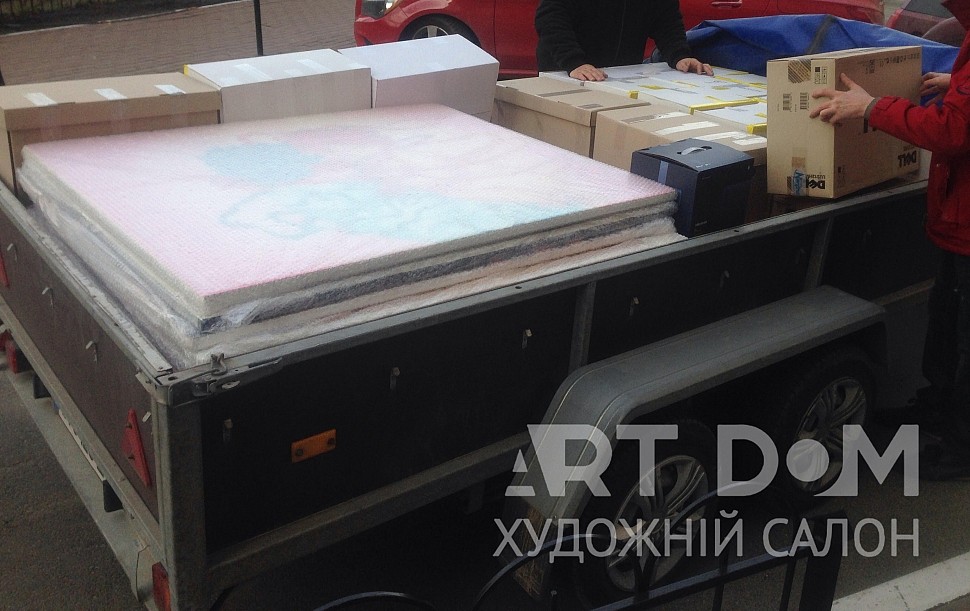
Shipping Artworks by Post
A common type of shipment used by our customers is the "Gift" and "Other" (sale, personal item shipment) categories.
Choosing the "Gift" shipping type makes it easier for the recipient to receive the parcel. In this case, you cannot include sales documents (invoice, receipt, invoice statement, etc.), as it is considered a gift. Delivery can take 10–15 days, while customs procedures may delay it by another 5–30 days. If the gift is valued at up to $50, it is exempt from customs duties in most countries.
Choosing the "Other" shipping type requires specifying in the customs declaration that it is a "shipment of the recipient's personal belongings" or, for example, a "shipment of a sold item to a buyer." In the latter case, supporting documents such as an invoice, receipt, sales contract, or invoice statement must be attached. This allows you to indicate the estimated value of the shipment and confirm the sale and tax payment.
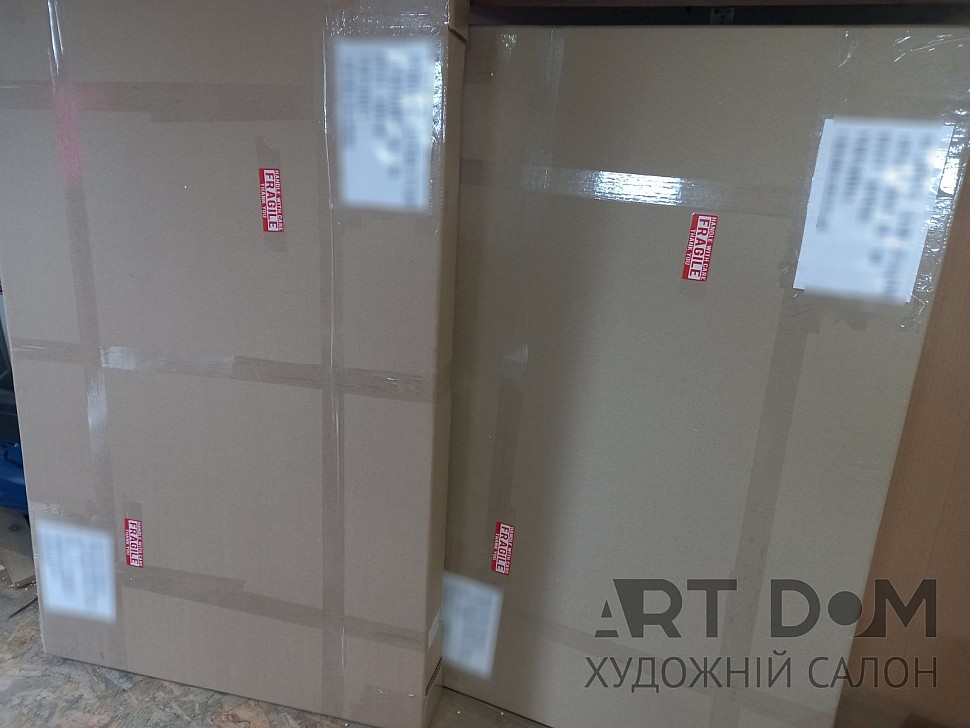
How to Quickly and Affordably Ship a Parcel Abroad?
A popular way to send artworks (paintings, sculptures) from Ukraine abroad is express delivery via EMS by Ukrposhta. Delivery times to the USA range from 12–20 days, to the UK (England) – 10–20 days, and to European countries (France, Germany, Spain, Belgium, Italy, Austria, etc.) – 14–22 days.
Good news from Ukrposhta – there is currently a 70% discount on parcel deliveries to Poland and a 60% discount to Germany. For other countries, Ukrposhta offers reasonable shipping rates.
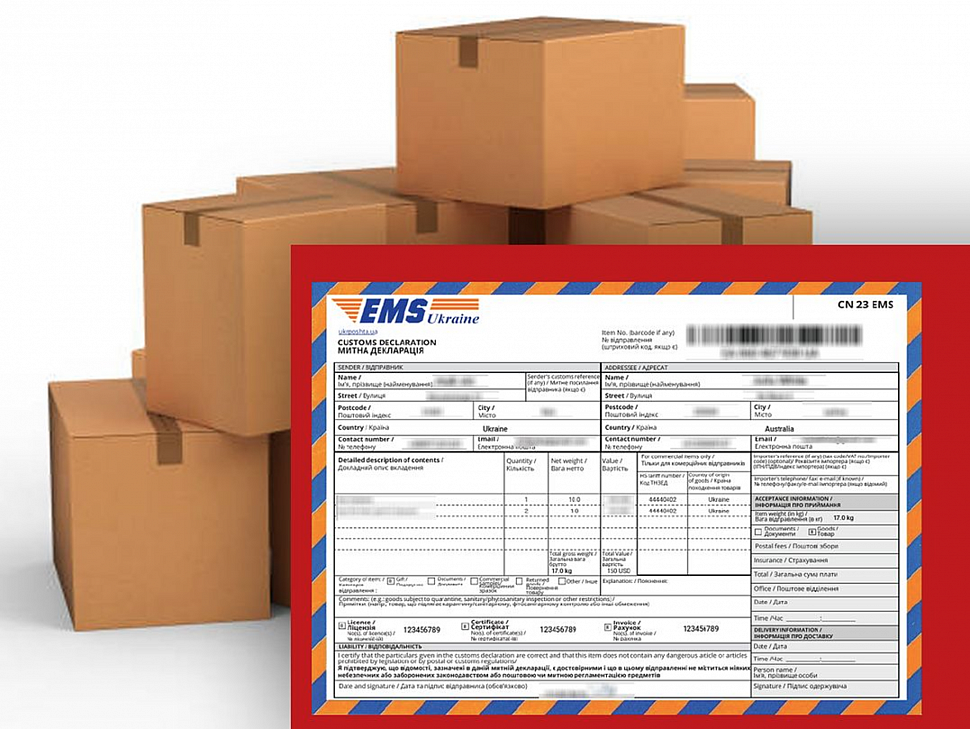
How to Correctly Fill Out a Customs Declaration?
Providing accurate sender details allows postal services to return the parcel to you if the recipient fails to collect it. For example, if the recipient is hospitalized or the postal service cannot reach them for over a month, your details will enable the postal service to contact you for clarification.
Accurate recipient details, including phone number and email, will help postal services avoid losing the parcel and notify the recipient about its arrival. This ensures the recipient is at home to receive the package directly from the courier.
The most important part of the customs declaration is the item description. Customs officers carefully review this section. Provide details in English – the artist's full name, the title of the artwork, dimensions, and estimated value in UAH and USD (or EUR for Europe). Be sure to check the correct category: "Gift," "Documents," or "Other."
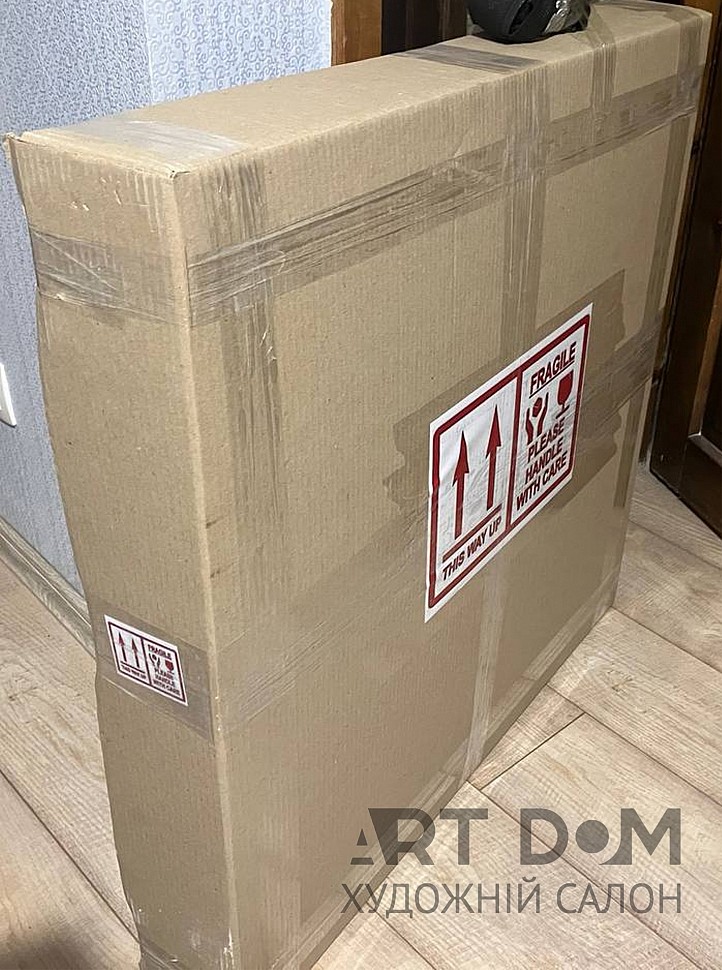
What Documents Are Needed: Complete List
To fill out the customs declaration and send or export artworks abroad, you may need:
- A passport or other identity document – to verify your identity when crossing the border or sending by mail.
- Artwork documentation (if available) – an invoice, sales or gift contract, expert opinion on value or authenticity.
- Customs declaration – the requirements may vary depending on the shipping method, but in any case, the declaration must contain accurate information about the number and value of the items.
- Insurance policy (optional) – if you want to insure the artwork against loss or damage during transit.
In some cases, an official permit may be required for customs clearance of artworks (especially if they hold cultural value). The exact list of documents should be clarified with customs or postal services in both the sending and destination countries.
Preparing Artworks for International Shipping
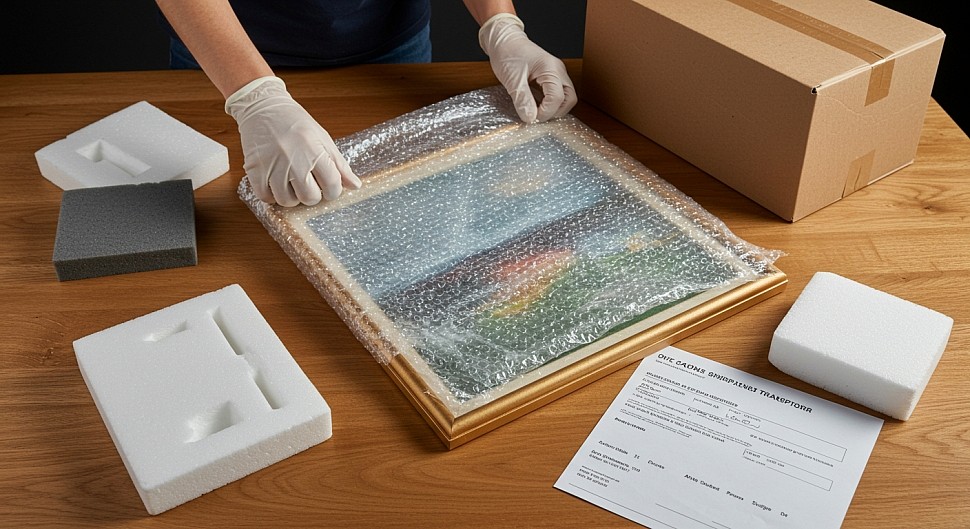
To prevent damage during transit, carefully package the painting or sculpture. Use:
- Thin paper or bubble wrap as the first protective layer.
- A rigid cardboard box or crate with reinforced corners.
- If sending multiple artworks, separate each piece with soft padding to prevent friction.
It is also advisable to include an itemized list inside the package, making it easier for customs officials to verify the contents and reducing the chance of confusion.
How to Avoid Delays When Crossing the Border with Artworks
The main rule is not to try to "hide" an artwork or understate its value. All information must be as truthful as possible. If you are unsure about the correct declaration of art objects, it is best to consult a customs broker or gallery specialists.
- Check the legislation of the country where the artwork is being sent regarding the import of art objects.
- Prepare documents in advance (permits, certificates) that may be required.
- Pay any applicable customs duties or taxes if the object is subject to them.
- Track the shipment to promptly resolve any customs issues.
Proper document preparation and transparency in declaration are the keys to a smooth and quick customs clearance process.
Frequently Asked Questions
Can I transport a painting across the border without filling out a declaration?
What are the ways to ship artworks abroad?
- Personal transportation of artworks by car or air travel (with mandatory customs declaration).
- Postal services, including express delivery (EMS, DHL, etc.).
- Specialized transport companies that handle valuable and large-scale artworks.
Do I need to pay customs duties when shipping paintings?
How to correctly fill out a customs declaration?
How can I quickly ship a painting abroad?
What should I do if my package with a painting is held at customs?
Contact the specialists at ArtDom Gallery – we will provide free consultation and assistance with:
- Filling out the customs declaration.
- Shipping and transporting artworks.
- Obtaining a permit for exporting artworks.
Call us at +380632478102
